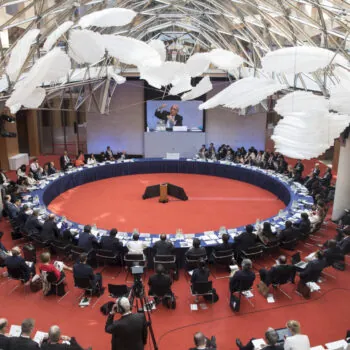E3G has been calling for a new model of climate ambition where international cooperation is strengthened to accelerate the decarbonization of the real economy, in the hope that progress in these areas can be used to drive further national ambition at home and in the United Nations Framework Convention on Climate Change (UNFCCC) process.
We’ve seen this theory of change on display these past few weeks at the Global Climate Action Summit (GCAS) in San Francisco and at Climate Week NYC. At both these summits, diverse global coalitions came together to accelerate and amplify different aspects of the low carbon transformation. We saw international cooperation around coal moratoria and phase out through the Powering Past Coal Alliance. International cooperation on renewable energy as in the International Solar Alliance and the new South East Asia Energy Transition Partnership launched. We saw more momentum on international alignment around a phase-out of the internal combustion engine or move to 100% zero emission vehicles. This is what real economy diplomacy looks like and we need to grow and strengthen these platforms. If we can more effectively project their dynamism, then we can really begin to shape national conversations and change perceptions of what’s possible in climate diplomacy.
Global Climate Action Summit
Conceived by former Executive Secretary of the UNFCCC Christiana Figueres, California Governor Jerry Brown and Former New York City Mayor Michael Bloomberg, the Global Climate Action Summit was designed to bring together “non-state actors” from across the globe to inject a sense of urgency on climate change. GCAS successfully demonstrated the scale of action already underway by cities, companies, and civil society groups and reaffirmed further ambition in a Call to Action along with a profusion of over 500 new announcements. You can see here the diversity of announcements and range of actors involved. There were a few themes that were particularly resonant and potentially catalytic.
2050 Today
In San Francisco, Governor Brown signed a new law and executive order to make California’s economy carbon neutral by 2045, joining over 100 Mayors, state and regional leaders and CEOs committing to neutral emissions by 2050. This is no small feat as California is the world’s fifth largest economy.
This was reinforced in New York at French President Emmanuel Macron’s One Planet Summit, when a group of 19 countries officially launched the Carbon Neutrality Coalition. Four new countries – Canada, Denmark, Spain and the United Kingdom – joined the initial 15 members to announce the “development of long-term low-greenhouse gases emission climate resilient development strategies, in line with the agreed long-term temperature increase limit.” Members of the initiative announced their intention to take decisive action to decarbonize transportation, energy, agriculture and land use sectors. Moreover, they talked about shifting financial flows and technological innovations towards emission-reduction projects.
This longer time horizon and unambiguous goal of a zero-carbon future changes the terms of the debate and puts the onus not on where we are going, but how we get there. It paints a picture of a future and then allows for back-casting with clear benchmarks to chart a course for decision-makers – be they in the public or private sector.
Money Talks
A key theme at GCAS and Climate Week NYC was the role and voice of the finance and investment community. There were a range of statements from pension funds and philanthropists announcing increases in their investments in clean energy and climate solutions. The launch of the Investor Agenda – an initiative that brings together 400 investors managing $32 trillion in assets – illustrates that in many jurisdictions markets and money are moving ahead of the politics and policy agenda.
Turning positive press into positive feedback loops
The profusion of announcements and affiliated events in San Francisco and New York created positive headlines for a few days. Beyond announcements and events however is a stark need to collect evidence of delivery and implementation. The world needs to see that commitments by non-state actors are opening up political space for countries to go further on their climate ambitions.
The climate change world needs to better track the reality of the transition to a low carbon economy. If not, we will continue to be portrayed as wishful thinkers. Creating feedback loops between different players would aid in establishing a stronger sense of momentum to build the confidence and willingness of world leaders to throw their political heft behind their domestic decarbonization agenda. This in turn would fire up the international stage to act instead of going along with the status quo.
It is too early to judge whether this theory of change – where progress in the real economy drives the politics of climate ambition – holds true. We will know more in 2020 when governments re-submit their Nationally Determined Contributions to the Paris Agreement. They will either enhance their ambition and close the gap between the global goal of limiting the temperature increase to well-below 2 degrees; or they won’t. Indeed, the upcoming IPCC report due out next week will likely show that the 1.5°C goal will be unattainable without a rapid and profound transformation of the global economy. So now, more than ever, we need stories of positive climate developments in the real economy to shine a light and build on.


